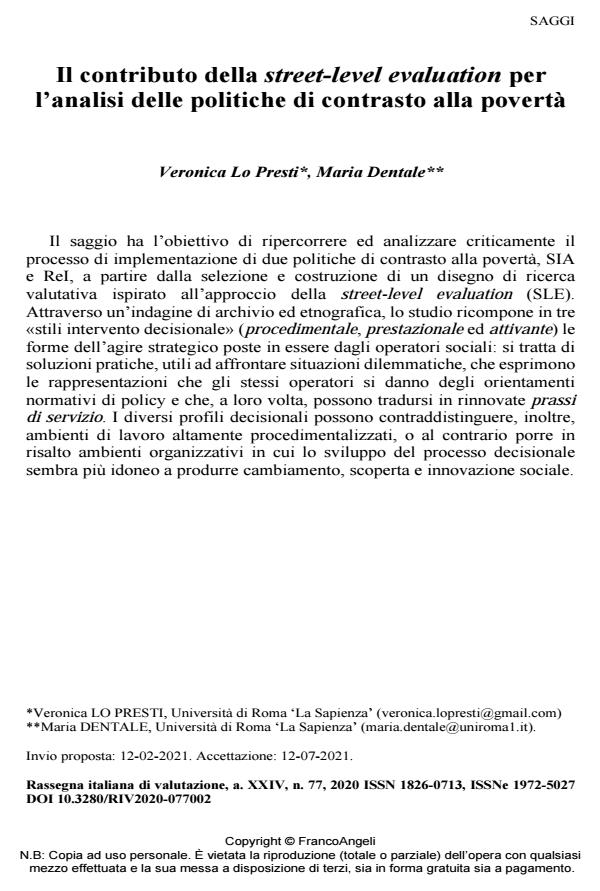Il contributo della street-level evaluation per l’analisi delle politiche di contrasto alla povertà
Journal title RIV Rassegna Italiana di Valutazione
Author/s Veronica Lo Presti, Maria Dentale
Publishing Year 2022 Issue 2020/77
Language Italian Pages 22 P. 11-32 File size 306 KB
DOI 10.3280/RIV2020-077002
DOI is like a bar code for intellectual property: to have more infomation
click here
Below, you can see the article first page
If you want to buy this article in PDF format, you can do it, following the instructions to buy download credits

FrancoAngeli is member of Publishers International Linking Association, Inc (PILA), a not-for-profit association which run the CrossRef service enabling links to and from online scholarly content.
Veronica Lo Presti, Maria Dentale, Il contributo della street-level evaluation per l’analisi delle politiche di contrasto alla povertà in "RIV Rassegna Italiana di Valutazione" 77/2020, pp 11-32, DOI: 10.3280/RIV2020-077002